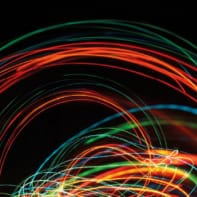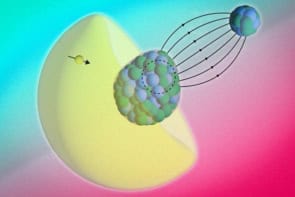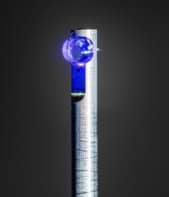
A dense, ultracold atomic gas has been created using blue-detuned laser light with a frequency that is higher than the atomic transition used to cool the atoms. This feat was achieved by Kyle Jarvis and colleagues at Imperial College London and their technique could offer a new way of trapping ultracold molecules – something that has proven very difficult to achieve.
Magneto-optical traps (MOTs) are particularly useful pieces of equipment for physicists wishing to trap samples of atoms at ultracold temperatures. MOTs use lasers with frequencies lower than certain atomic transitions (red-detuned frequencies) to cool the atoms. This “Doppler cooling” process involves atoms absorbing and emitting light in such way that their motion is reduced. It can be used to cool atomic gases to microkelvin temperatures – allowing the atoms to be used in a wide range of applications such as simulating quantum solids, measuring tiny changes in gravity and creating highly accurate clocks.
Avoiding rotation
Most MOTs achieve Doppler cooling through “type-I” atomic transitions, whereby the angular momentum of the excited state atomic state is higher than in the ground state. However, type-I transitions are of little use when trapping molecules because the trapping process must avoid exciting a molecule’s rotational and vibrational states. Instead, molecules need to undergo type-II transitions in which the excited-state angular momentum is lower than the ground state.
Attempts at using red-detuned lasers in MOTs to cool atoms and molecules using type-II transitions have resulted in gases that are too warm and too diffuse to be of any practical use. In their experiment, Jarvis and colleagues used blue-detuned lasers – with a frequency higher than that of the transition frequency. They describe this as a “counterintuitive” change in the cooling process because the absorption of red-detuned light by an atom is normally what causes the atom to slow down.

Ultracold molecules with electric and magnetic moments stick around
Despite this unconventional approach, the team could trap and cool rubidium-87 atoms using type-II transitions and achieved a density of 10¹¹ atoms per cubic centimetre – which is about one million times higher than achieved by red-detuned lasers. They also managed to cool the gas to below 30 μK.
The research is described in Physical Review Letters.



